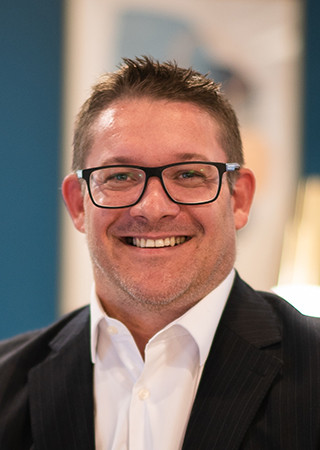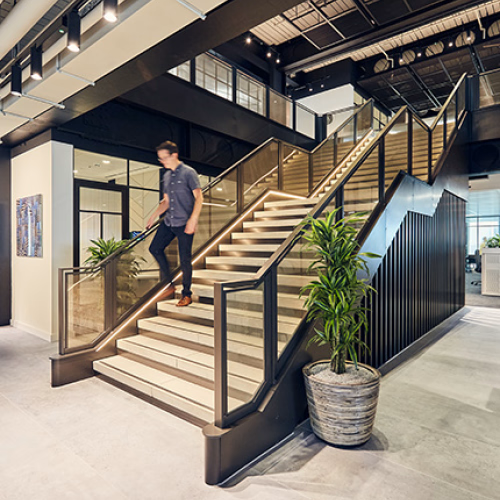Landlords, what’s your ‘Why’?
In a rapidly evolving business world, how can landlords stay competitive? To help to navigate uncertainty, you need to find your ‘Why’.


Uncertainty has been felt across the business world in recent years, and landlords aren’t exempt. Specifically, many have enduring unsettling fluctuation in the commercial real estate market, especially when the asset is an office or workplace. Landlords have had to pivot quickly to accommodate for changing business needs and requirements as many companies choose to consolidate or downsize their space, and seek out a space that truly aligns with what’s important to them and their business journey.
Whilst we can’t be sure we’ve seen the back of the post-COVID fluctuance, what we do know is that there’s still an abundance of ongoing change in the market that will influence the landscape for the better.
Employees’ expectations of their employer and their workplace have changed, as have consumer demands for further environmental and social commitment from the brands they love.
With a rising benchmark for the quality of the office environment combined with a higher demand for ESG-aligned buildings from occupiers, how can landlords stay competitive, increase asset value and keep costs reasonable? To help to navigate uncertainty and make choices that support your goals in the face of adversity, you need to find your ‘Why’. What are your developmental goals for the building? What do you want your asset to be known for? Ultimately, what does your real estate strategy stand for?
The lifecycle of commercial real estate assets
Changing approaches to work, in the form of hybrid and remote working strategies, mean that many businesses are opting to take up less office space or consolidate their workforce under one roof when they are all brought together. This has led, over time, to a build-up of ‘grey space’ – when a tenant moves out, but their fit-out is still there. This space isn’t newly refurbished and therefore needs work before it can go back on the market, incurring costs directly to the landlord. This interrupts a landlord’s plan for a building, forcing them to make quick changes to get a space ready for market again – in doing so, some landlords may feel like they’re compromising the long-term vision to keep the building profitable in the short term.
For the most part, existing assets are hit hardest by these changes in the market. During the average building’s life, it will go through between 30 and 40 fit-outs. It can be challenging to retrofit features that are growing in popularity, whether they are amenities like showers and secure bike storage or structural upgrades to mechanical and electrical elements in line with building regulations. Making these modifications is far more costly for older assets, which makes staying ahead of – or even in line with – the curve all the more challenging, but even more important. Reinventing a building is no small task, and when defining what ‘good’ looks like, the dial is constantly moving.
There are also continuously developing sustainability guidelines and regulations to consider as businesses look to their landlords to help combat health and sustainability initiatives. As a result, tenants who desire a ‘healthy’ or ‘green’ building are paying a premium in a market that takes an all-or-nothing view on whether they want to invest in sustainability, instead of considering it an ongoing process, which leaves them with little choice or flexibility.
So, how do we collectively begin to depolarise the market to provide more options and to make asset rejuvenation more achievable for landlords?
Taking a catch-all approach to redevelopment may seem like the most time-friendly and cost-effective way forward, but could likely stop you from leveraging your asset to its full potential. By trying to accommodate to everyone’s needs, an asset could end up ticking less boxes for one tenant or another, leaving you with a smaller pool of potential businesses, who would all need to have more generic requirements to feel like the building will serve their needs.
What’s your ‘Why’?
Look at a building like a person; It needs regular maintenance check-ups and sustenance to survive, but over time, it will grow and develop itself and offer different things. What do you want this asset to represent? What kind of people do you envision the building to host? Consider what the ideal location, price point and amenities for these businesses might be.
Are you targeting businesses that operate in a field that incurs a lot of travel? Maybe business dinners or team socials are a large part of their culture? Do they have a (formal or informal) commitment to ESG? The answers to questions like these will inform you of what your building needs in and around it to position it as a contender in the market.
So then, by asking yourself who it is that you’re trying to attract, you can understand what a building needs to have, and what is nice to have – but possibly less important – depending on what you’re trying to achieve. In turn, there are rewards to reap both in the short and long term, both from a commercial and social value perspective.
To find your ‘Why’, this three-step process is a good place to start:
- Understand – Identify who you’re attracting. What industry do they work in? What do they care about and why? How does this translate to your offering?
- Align – Prioritise what matters most to your ideal occupier. You’ll begin to further understand how you can align your building’s offering with their needs, what’s negotiable, and what’s essential.
- Aspire – Recognise that you can’t be all things to all people, but you can plan to expand over time. Enhancing your offering takes time and is a journey in itself. Think about what you stand for as a landlord or service provider, what areas you want to grow into, and make a long-term plan for improvement.
Over the last few years, the Peldon Rose Landlord team has been on its own journey to find the ‘Why’ in what we do, giving us the know-how in helping you to find yours. We’re in constant conversation with the market, including agents networks, property managers, occupiers and other landlords. Our awareness of change, our extensive knowledge and our finger-on-the-pulse attitude allow us to give landlords a better understanding of occupier drivers both now and envisaged.
In challenging times, it’s important to get ahead where you can. Knowing what kind of environment you’re trying to create, who for and why will help you to find your niche, save costs and achieve long-term success in reaching sustainability goals.
Stay tuned for more insight pieces that will look back to see what the industry has learned, but more importantly how we can take these learnings forwards. We’ll examine how to challenge your current strategy and giving you actionable insights to combat ongoing uncertainty and develop your overarching strategy for the best long-term results on your estate.
You may also like

Powered by People: A message to the landlord market
Our data-backed research reveals why landlords operating within the commercial office space must harness...

How a well-designed office pays a return on investment
Kevin Wither, Head of Landlord, spoke with Global Banking and Business Review to discuss how a well planned...

Start your workplace transformation today.
Your workplace holds enormous potential to improve your business performance. Get in touch today, and we will unlock that potential together.


